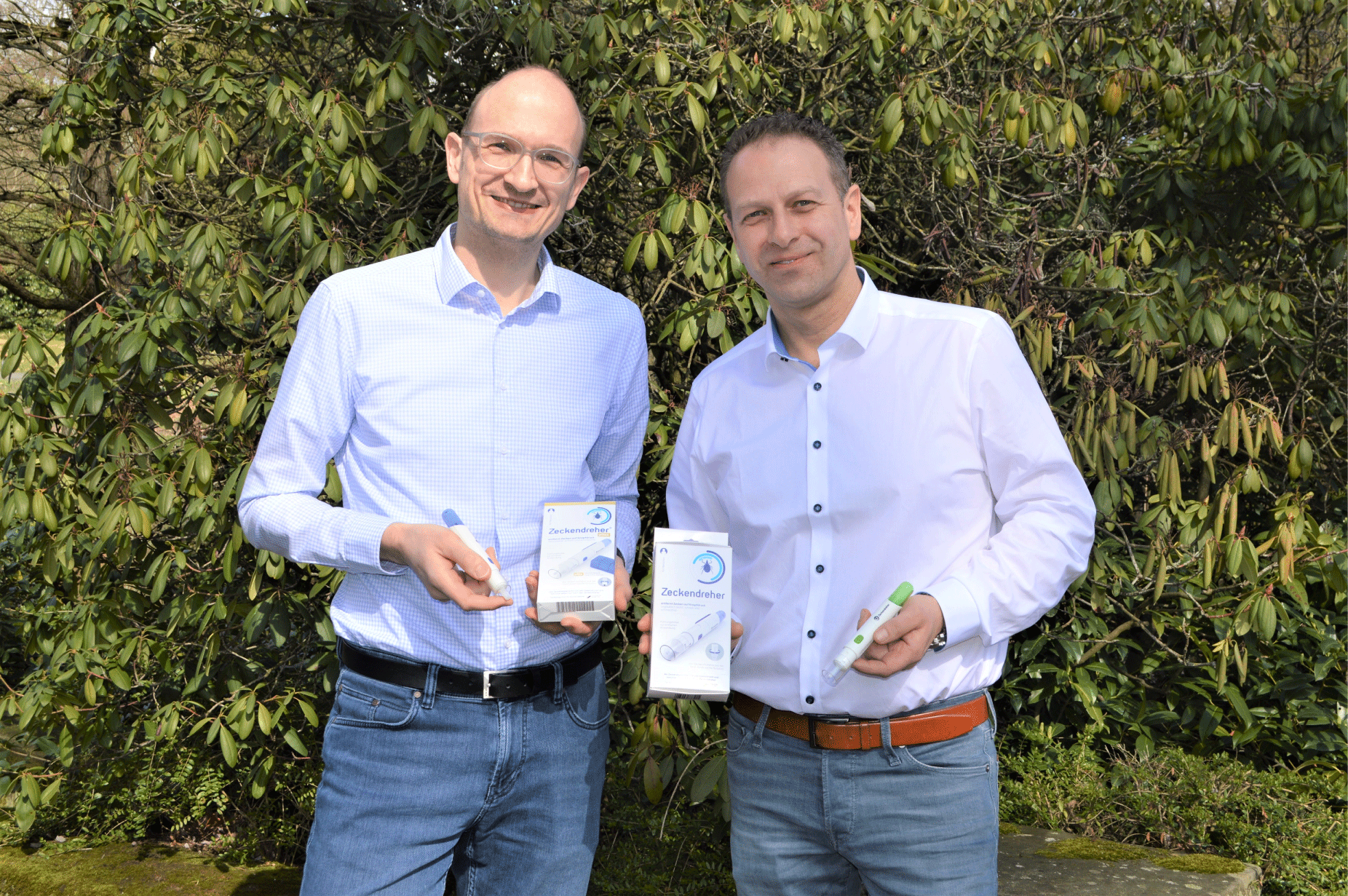How does an attached tick detach itself?
Find out here how a team studied the tick's natural release behaviour.
Text by Franziska Iff
We were able to get the Tick Dad team to answer a few questions about ticks. The team consists of interested people and scientists who have observed and documented the tick's release behaviour and have come to the conclusion: It does turn after all.
How did you become interested in the tick's release behaviour?
The trigger in 2018 was a tiny tick nymph torn off behind a child's ear.
Although we took great care to grasp the black tick, which was about 1 mm in size, very deeply and close to the skin at the biting apparatus with curved pointed tweezers and tried to pull it out slowly (in accordance with medical recommendations), it tore off. The tick was still stuck in the skin and became inflamed again and again until it finally came out after about 3 months.
It was then clear that pulling was not a good idea, but none of the experts we asked could explain to us how the tick detaches from the host in nature. So we ordered 300 laboratory ticks and started several series of experiments on our own under the supervision of a professor from the University of Bayreuth.
Depending on their stage of development, all ticks need different rotational movements and some time. We now also know why they all have to turn and why they can detach from the skin as a result. We have come to the conclusion that rotating three times through 360 degrees slowly and continuously without applying pressure is the best way to remove a tick completely and with minimal infection.
What do you think is the most important preventative measure to prevent tick bites?
Absolutely important and first and foremost: search, search, search... thoroughly in every crevice and in your hair! After every visit outdoors (whether in the forest, meadow or well-tended garden).
Spraying and light-coloured clothing only helps to a limited extent and for a limited time.
Spraying or rubbing in all household remedies containing lauric acid for about one to two hours and only where they are on the skin (e.g. coconut or black cumin oil) will help.
Why do you think it is important to remove ticks immediately?
Once a tick has started sucking, more and more pathogens can be transmitted to us with each sucking process (regurgitation).
If pathogens enter the body because the tick is not removed, squeezed or torn off or opened, the risk of infection increases.
The findings of team Tick Dad have been summarised in a scientific paper that is currently awaiting publication. Until the twisting release behaviour of ticks and the resulting twisting method is officially recognised, we use better (and worse) tools to gently twist the tick about three times through 360 degrees in order to minimise infections.


